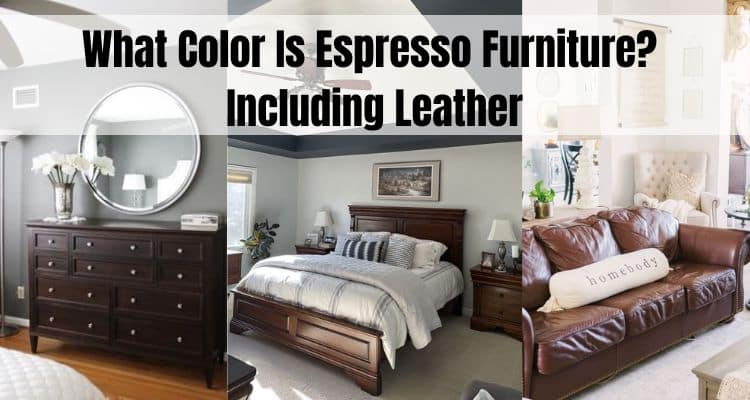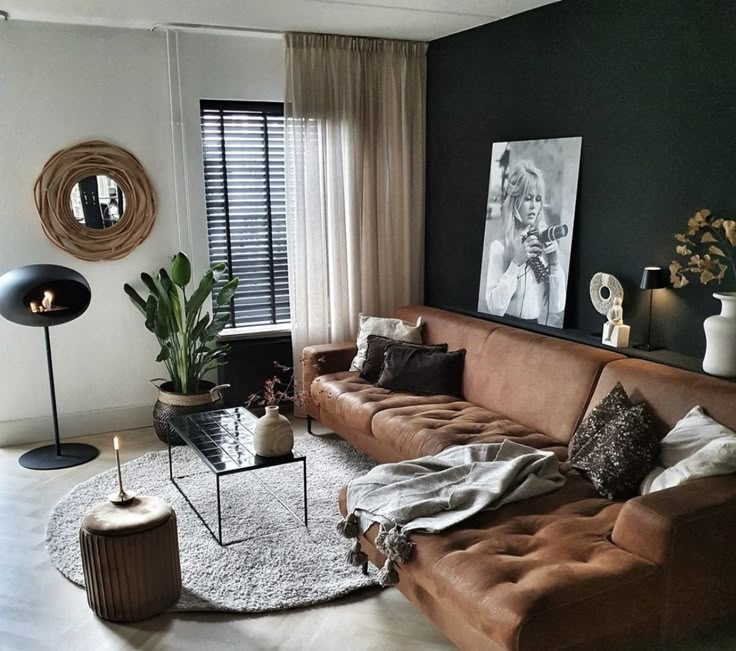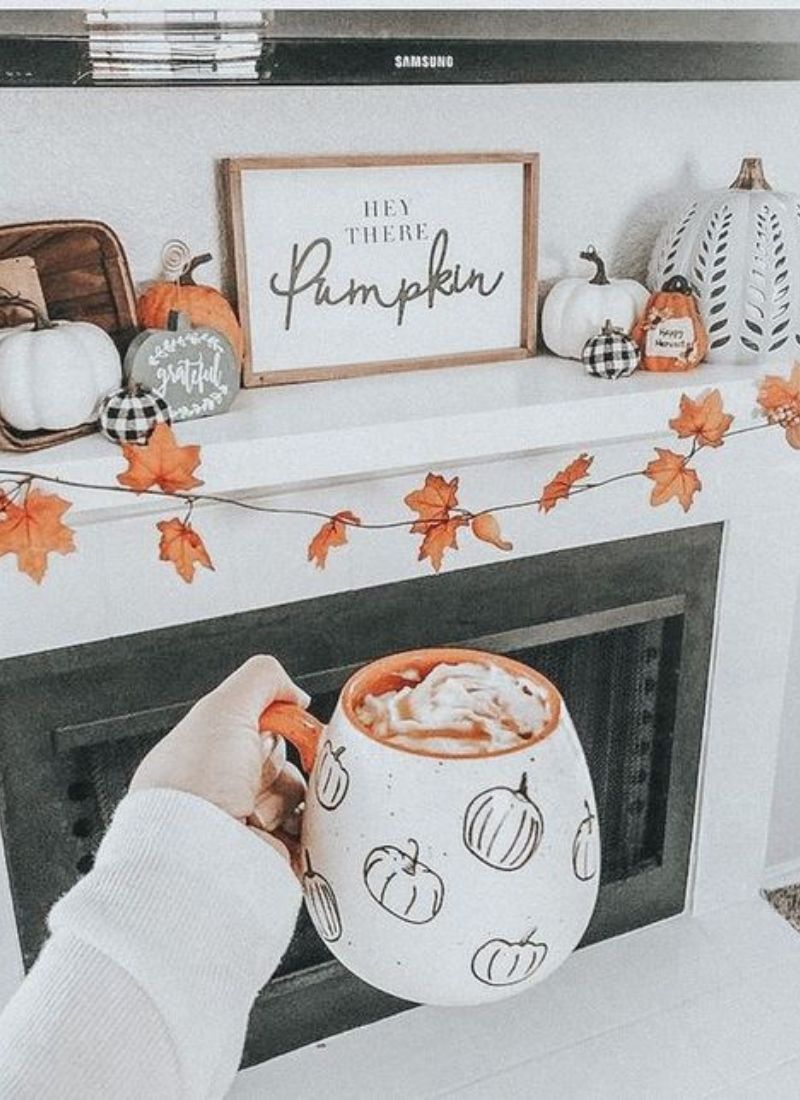Hey all! My name is Julia, former college student and a home decor enthusiast who loves DIY home improvement projects and finding creative ways to decorate any living spaces on a budget. Recently moved from my dorm to my new apartment which I renovated from scratch and I am here to help you with tips & tricks about home decor/college and more 🙂
Espresso furniture is a popular choice for adding warmth and sophistication to any space. But what exactly is the color of espresso furniture? In this post, we’ll explore the various shades and undertones of this rich and versatile hue.

I’ve always admired how espresso furniture adds warmth and a touch of sophistication to a room.
Yet I’ll admit, I’ve often wondered what people actually mean by “espresso” color when it comes to furniture.
Usually it’s a deep, rich dark brown — like a strong shot of coffee — but not every piece looks the same. The tone can vary: some woods or finishes give it a reddish or yellowish hint, while others make it nearly black.
It really depends on things like the type of wood and whether the finish is glossy or matte.
And lighting matters too: bright sunlight will bring out warm brown highlights, while in artificial light it might look more neutral or a bit cooler.
In this guide, we’ll explore the shades and influences behind espresso wood, including how leather upholstery can affect the look.
The Basics of Espresso Furniture Color

In furniture terms, espresso color is typically a very deep, dark brown with hints of black.
Different woods and finishes can shift this tone: for example, mahogany may lend a warm reddish tint while walnut often looks cooler and gray-brown; a glossy finish can make the wood appear nearly black, while a matte finish lets more brown show through.
Lighting and surrounding colors also affect the look — sunlight makes the wood glow warm, while cool or dim light can make it seem more neutral.
If a piece has leather upholstery, the leather’s shade matters too: dark leather deepens the coziness, while lighter leather brightens and adds contrast.
Espresso and Leather

Leather upholstery can significantly influence the feel of espresso wood.
A deep chocolate-brown leather cushion will amplify the wood’s warmth, whereas a cream-colored leather brightens the piece and adds a modern feel.
The leather’s texture and finish also play a role: smooth, shiny leather looks sleek and polished, while pebbled or suede-like leather adds depth and character.
Natural aniline leather shows variations and develops a patina over time, while pigmented leather stays more uniform and a bit more durable.
Variations in Espresso Furniture Color

Espresso isn’t an exact shade, so expect variations from one piece to another.
The wood species and finish make a big difference: mahogany often brings a warm red tint, walnut tends to be cooler gray-brown, and a glossy finish makes the wood look almost black while a matte finish lets more brown show through.
Lighting can dramatically alter the look too — sunlight brings out warm brown tones, while cool or dim light can make it appear more muted, and the leather color on a piece also plays a role (dark leather deepens the richness, light leather brightens it).
Over time, sun, humidity, and wear can slightly lighten the wood or give it a bit of patina.
Factors That Affect the Color of Espresso Furniture with Leather Accents
When leather is involved, its characteristics also influence the look.
Natural full-grain (aniline) leather soaks in dye and develops rich color variation and patina over time, while pigmented leather has a more uniform color.
The way the leather is dyed or finished can also subtly shift its shade.
Lighting and time further affect both leather and wood — for example, sunlight and age can fade or warm them — and gentle cleaning and conditioning are important to preserve the original color.
Tips for Choosing Espresso Furniture

Think about style and quality: pick an espresso and leather piece that suits your room’s vibe and feels well-made (solid wood and soft, thick leather feel more durable).
Compare colors carefully by checking swatches or photos in your home’s lighting; make sure the wood stain and leather shade work with your walls and floors, and decide if you want them to blend in or stand out.
Also consider practicality: leather furniture needs care (quickly clean spills and condition it now and then), and scale (ensure a large dark sofa won’t overwhelm a small room).
Pairing Espresso Furniture with Other Colors and Materials
Neutral colors like beige, cream, or soft gray are a foolproof backdrop that lets espresso furniture stand out elegantly without clashing.
For a pop of drama, deep accent colors like navy, forest green, or rich red can make espresso pieces really pop (even a pillow or a piece of art can do the trick).
Metallic touches (brass, silver, or bronze accessories) add warmth and a bit of shine, giving the room a classy sparkle.
Cozy textures (wool, linen, or jute) break up the darkness and soften the space, and mixing in lighter wood tones (like oak shelves or pale floors) provides a striking contrast to the espresso’s dark finish.
Maintaining and Cleaning Espresso Furniture with Leather
Gently dust both wood and leather every week or two with a soft cloth, and wipe spills quickly with a damp cloth (mild soap is fine); avoid harsh or abrasive cleaners that can strip finishes or dry out the leather.
Condition the leather every few months by rubbing in a good leather conditioner — it keeps the upholstery soft and prevents cracking.
Also, avoid placing your furniture in direct sunlight or very dry/humid areas, which can cause the wood to fade or warp and the leather to crack.
Following these steps helps keep your espresso furniture looking its best for years.





